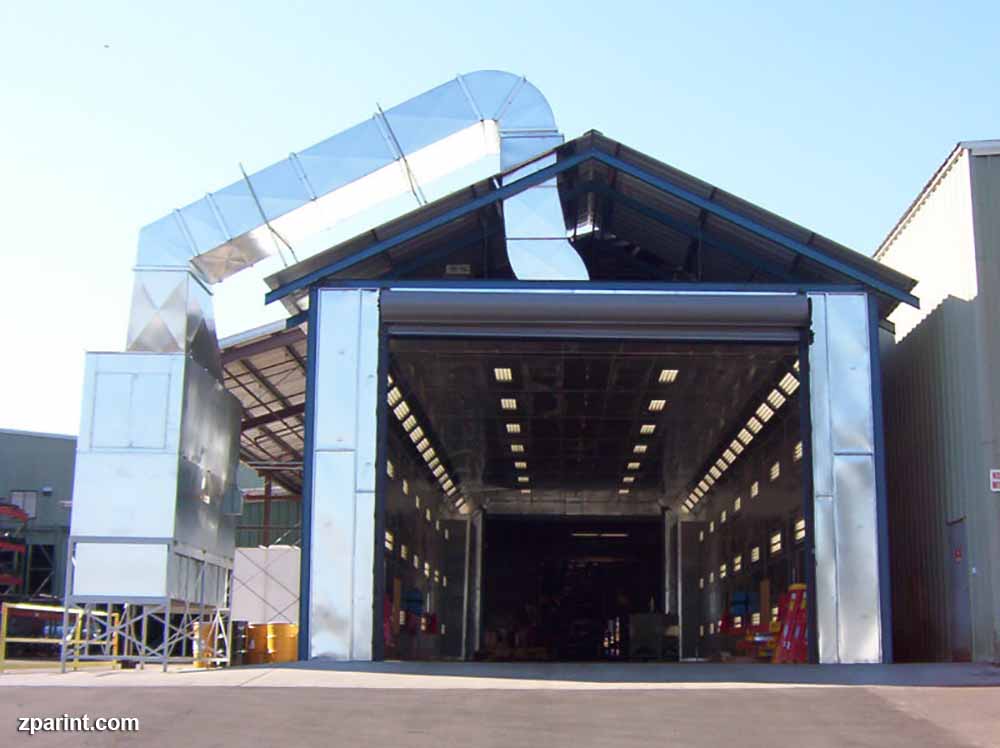Air makeup paint booth filters
This variety of spray paint booth filters happen to be the very first line of defense in the air makeup unit. For those who might perhaps not be in the know, the air makeup units’ primary function is to make sure the spray booth receives adequate pressurized air over the course of its operations. Air makeup filters set to work by trapping the larger contaminants prior to the air being relayed through the air makeup unit. At the same time, this variety of paint booth filters also help in prolonging the lifespan of the more costly intake filters.
Intake paint booth filters
On the other hand, intake filters are primarily responsible for trapping microscopic contaminants whose presence in a spray booth can ruin a paint job’s finish. Intake filters, for the most part, are internally supported polyester panels or linked panels. Both of which are installed without the need for clips or any other mounting hardware. This goes a long way in fashioning a fit that is devoid of leaks once they are inserted into the frame.

Exhaust paint booth filters
The main function of exhaust filters in a spray paint booth is to make sure the air expelled from it towards the atmosphere is always safe. Also, these kinds of filters are designed to ensure potentially hazardous chemicals don’t linger in the unit once operations are complete. For this to be achieved, spray booth exhaust filters must be able to contain sufficient amounts of paint to circumvent the necessity to replace them on a frequent basis. Traditionally, these filters are of the single-stage filtration media type and are crafted from multilayered polyester or fiberglass.

Proper paint booth filter maintenance
Besides knowing what paint booth filters you should utilize, it is always essential to incorporate an intake and exhaust filter replacement regimen on a regular basis. This is simply because your unit won’t be able to carry out finishing operations efficiently and safely if these critical components get worn out, defective, or in any other way impeded from functioning as required. In the event you fail to see this is done, there will be a heightened risk of damage to your paint job finishes. In the extreme, failing to do so could end up exposing your painters to serious health and safety hazards. Also, another reason why it is important to change your spray paint booth filters regularly is it will, in the long run, keep your paint shop’s operational costs low. Doing so will as well enable you to fully comply with both OSHA and NFPA’s health and safety regulations.
What is the ideal time to change a paint booth’s filters?
Ideally, the lifespan of spray booth filters tends to vary and is dependent on a number of factors. This can include the type of paint you use, your unit’s exact design, fan speed, temperature, or even the sort of spray equipment you use. One excellent means of precisely determining when filters must be replaced is installing a manometer in your unit. Manometers go to work by measuring pressure differential and can alert you the moment these components are loaded and have to be changed. However, if your paint booth doesn’t feature a pressure gauge, you should incorporate a filter replacement schedule that takes into account the exact volume of painting operations your shop carries out daily.

Invest in high-quality paint booth filters
Apart from changing your spray booth filters on a regular basis, it is also important to use top-quality filters at all times. Granted, you might make short-term cost savings on cheap filters, but this won’t prove to be a sustainable solution. In the first place, cheap filters are known to get loaded with paint incredibly fast, which will necessitate frequent replacements. It is as well important to note low-cost paint booth filters come with a decreased capture efficiency. In turn, this may result in you having to foot exorbitant costs for replacing other parts of your booth including motors, ductwork, and even fans. Lastly, when it comes to exhaust filters, it is always essential to pick the suitable media for your exact application.


